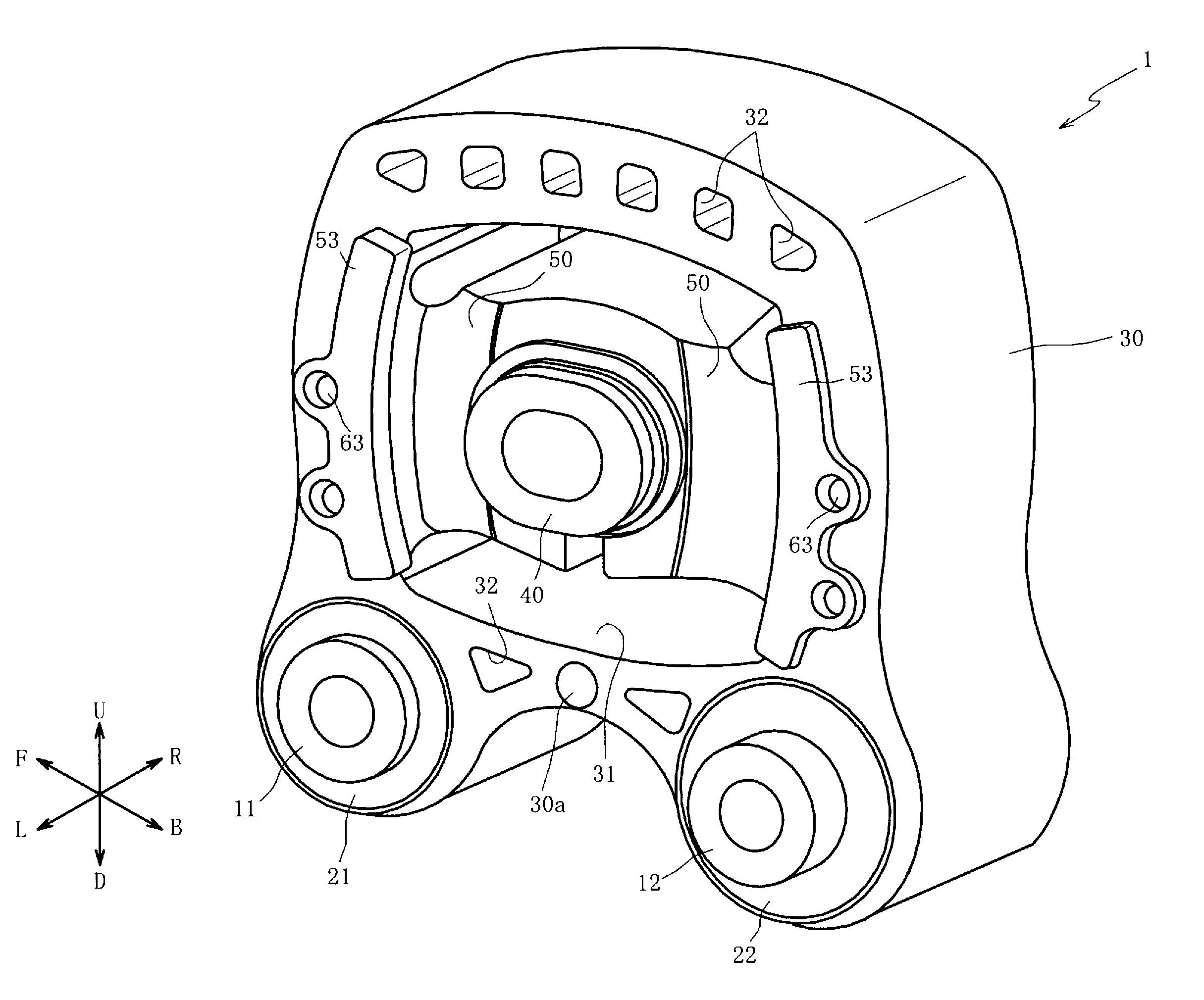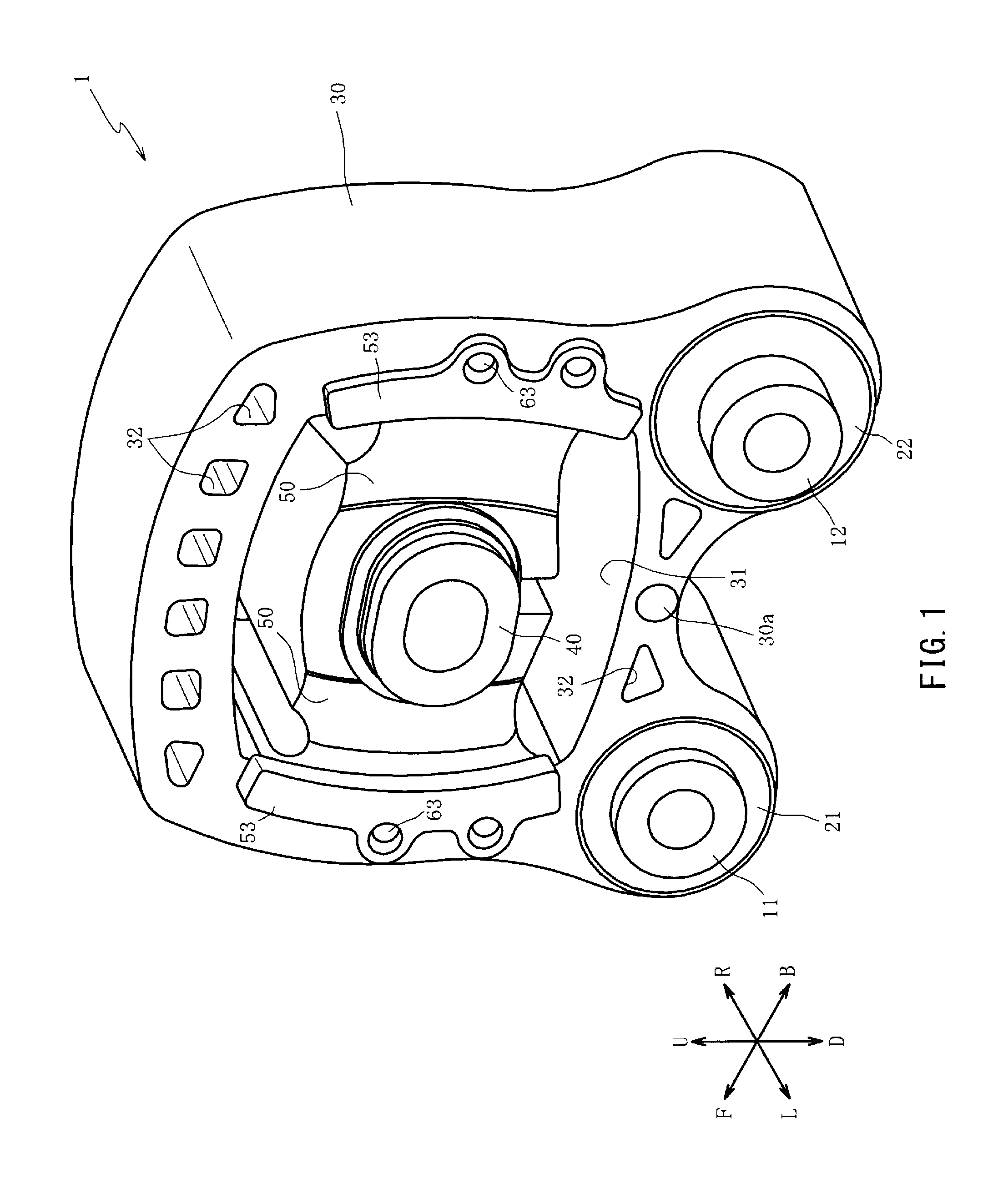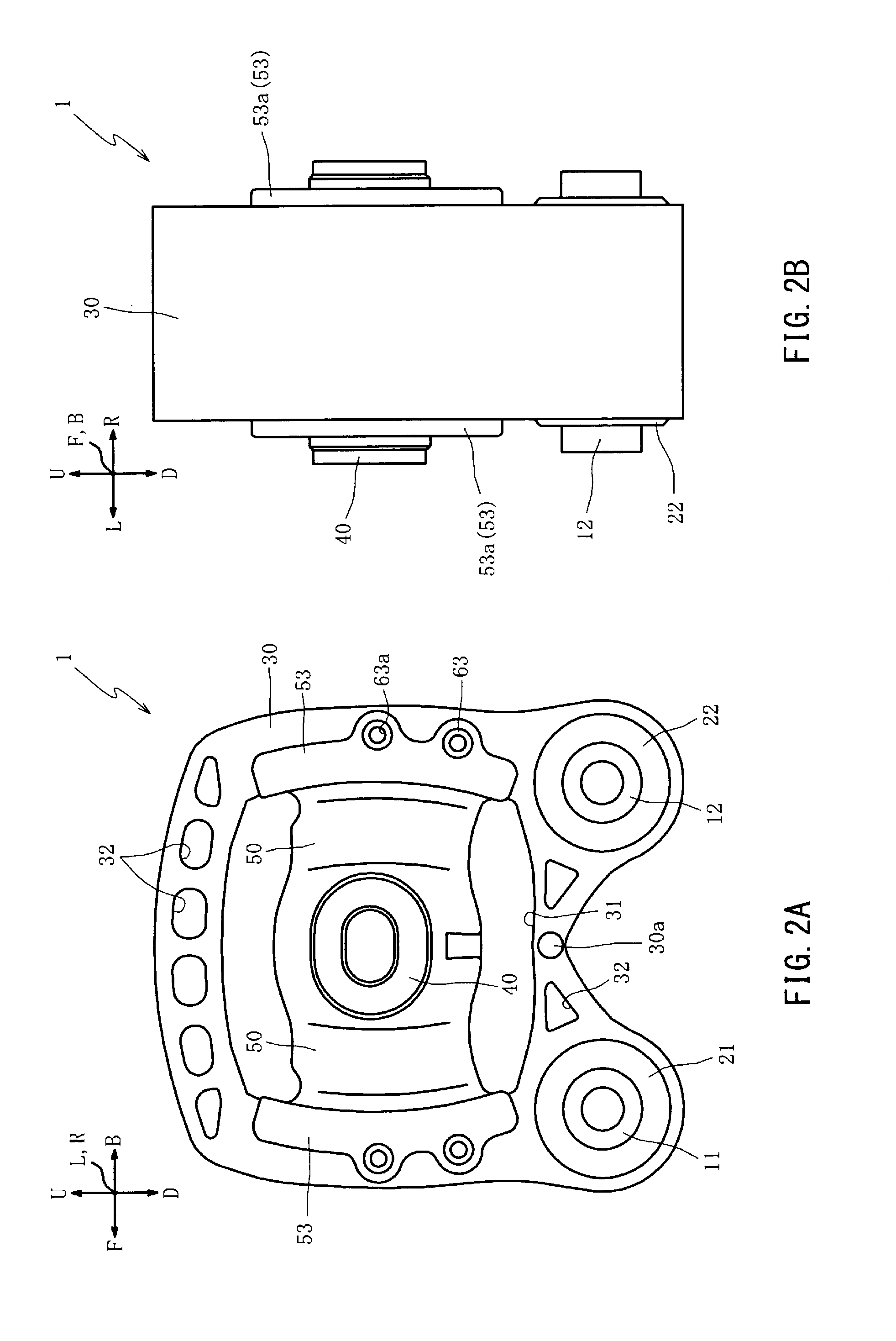Vibration isolation apparatus
a technology of vibration isolation and rubber parts, which is applied in the direction of mechanical equipment, shock absorbers, transportation and packaging, etc., can solve the problems of inability to restrict the movement of the opponent member, damage, and collision between the opponent member and the bracket member, so as to improve the durability, reduce the contracting, and increase the rubber volume of the insert rubber part
- Summary
- Abstract
- Description
- Claims
- Application Information
AI Technical Summary
Benefits of technology
Problems solved by technology
Method used
Image
Examples
first embodiment
[0066]Hereinafter, preferred embodiments of the present invention will be described with reference to the accompanying drawings. First, the overall structure of a vibration isolation apparatus 1 will be described with reference to FIGS. 1, 2A, and 2B. FIG. 1 is a perspective view illustrating the vibration isolation apparatus 1 according to the present invention;
[0067]FIG. 2A is a front view illustrating the vibration isolation apparatus 1; and FIG. 2B is a side view illustrating the vibration isolation apparatus 1. In FIGS. 1, 2A, and 2B, the directions of arrows F and B denote the front and back directions of a vehicle, the directions of arrows L and R denote the left and right directions of the vehicle, and the directions of arrows U and D denote the upper and down directions of the vehicle.
[0068]As shown in FIGS. 1, 2A, and 2B, the vibration isolation apparatus 1 is used to support and fix a vehicle vibration source (not shown) and block transmission of vibration from the vibrat...
fourth embodiment
[0187]The base plate part 4061 includes a protrusion front part 4061b and a pair of protrusion side parts 4061c. The protrusion front part 4061b connects the pair of first wall parts 62. Along with this, the protrusion front part 4061b is curved in an arc-shaped sectional shape in a manner such that the height of the protrusion front part 4061b increases gradually from about the center of the base plate part 4061 to one of the first wall parts 62 (lower side in FIGS. 23A and 24A). Further, the protrusion front part 4061b protrudes toward an internal cylinder member 40 (refer to FIG. 25). The protrusion side parts 4061c are disposed on both sides of the protrusion front part 4061b (front and back sides of the paper in FIG. 24A) to connect the protrusion front part 4061b to the second wall parts 63. In addition, the protrusion side parts 4061c have a flat plate shape and extend from the second wall parts 63 to form the same planes together with the second wall parts 63, respectively. ...
fifth embodiment
[0199]Next, a first molding product 5100 of the fifth embodiment will be described with reference to FIGS. 28 and 29. FIG. 28 is a partially enlarged sectional view of the first molding product 5100. FIG. 28 corresponds to FIG. 7B. Further, FIG. 29 is a side view of the first molding product 5100 taken in the direction of an arrow XXIX of FIG. 28.
[0200]The first molding product 5100 of the fifth embodiment has the same structure as the first molding product 100 of the first embodiment except for a rubber notch 5055. Thus, the same elements are denoted by the same reference numerals, and descriptions thereof are not repeated.
[0201]As shown in FIGS. 28 and 29, the rubber notch 5055 is formed in one of first wall covering rubber parts 52. That is, since the first wall covering rubber parts 52 cover the outer surfaces of the first wall parts 62 to a constant thickness, the rubber notch 5055 slightly smaller than the fitting notch 5065 (by the covering thickness of rubber) is formed as a...
PUM
| Property | Measurement | Unit |
|---|---|---|
| elastic | aaaaa | aaaaa |
| distance | aaaaa | aaaaa |
| area | aaaaa | aaaaa |
Abstract
Description
Claims
Application Information
 Login to View More
Login to View More - R&D
- Intellectual Property
- Life Sciences
- Materials
- Tech Scout
- Unparalleled Data Quality
- Higher Quality Content
- 60% Fewer Hallucinations
Browse by: Latest US Patents, China's latest patents, Technical Efficacy Thesaurus, Application Domain, Technology Topic, Popular Technical Reports.
© 2025 PatSnap. All rights reserved.Legal|Privacy policy|Modern Slavery Act Transparency Statement|Sitemap|About US| Contact US: help@patsnap.com



